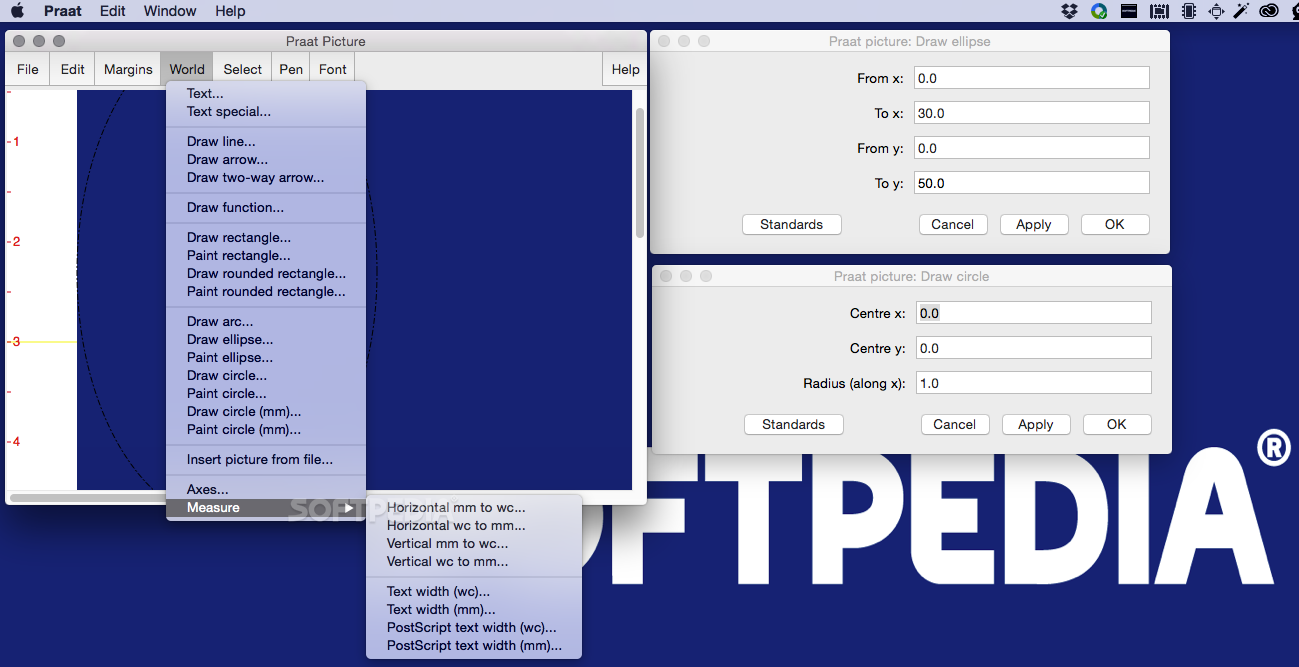Download Praat for Mac now from Softonic: 100% safe and virus free. More than 407 downloads this month. Download Praat latest version 2020. Download Praat free download - Download App, PDF Download, Free Download Manager, and many more programs. Download praat.tmLanguage and the six snippet files (you can just clone the whole repository if you want). Open Sublime Text and go to Preferences Browse Packages. There, create a folder called 'Praat' and save all the downloaded files inside that new folder. Download the latest version of Praat for Mac. Analyse and apply changes to audio files. Praat is a curious application that will let you record or import sounds. Praat on 32-bit and 64-bit PCs. This download is licensed as freeware for the Windows (32-bit and 64-bit) operating system on a laptop or desktop PC from graphics software without restrictions. Praat 6.1.35 is available to all software users as a free download for Windows 10 PCs but also without a hitch on Windows 7 and Windows 8.
Praat is a free and open source speech analyzer software app filed under graphics software and made available by Paul Boersma and David Weenink for Windows.
The review for Praat has not been completed yet, but it was tested by an editor here on a PC and a list of features has been compiled; see below.
If you would like to submit a review of this software download, we welcome your input and encourage you to submit us something!
Creates an interesting phonetician analysis of voices and speech
Praat is a piece of software that helps phoneticians analyze, synthesize, and manipulate speech.
Praat enables you to create a source signal from scratch or from an existing speech signal, but also to create a filter or to extract it from an existing source. You can manipulate (change, adapt) both the source and the filter before doing the actual synthesis, which combines the two.
Features and highlights
- Speech analysis: spectral analysis (spectrograms), pitch analysis, formant analysis, intensity analysis, jitter, shimmer, voice breaks
- Cochleagram
- Excitation pattern
- Speech synthesis: from pitch, formant, and intensity, articulatory synthesis
- Listening experiments: identification and discrimination tests
- Labelling and segmentation: label intervals and time points on multiple tiers
- Change pitch and duration contours
- Filtering
- Learning algorithms: feed forward neural networks
- Statistics: multidimensional scaling
- Principal component analysis
- Graphics: high quality for your articles and thesis
Praat on 32-bit and 64-bit PCs
This download is licensed as freeware for the Windows (32-bit and 64-bit) operating system on a laptop or desktop PC from graphics software without restrictions. Iphone movie converter mac. Praat 6.1.36 is available to all software users as a free download for Windows 10 PCs but also without a hitch on Windows 7 and Windows 8.
Compatibility with this speech analyzer software may vary, but will generally run fine under Microsoft Windows 10, Windows 8, Windows 8.1, Windows 7, Windows Vista and Windows XP on either a 32-bit or 64-bit setup. Top 100 online casinos. A separate x64 version may be available from Paul Boersma and David Weenink.


- Praat Download
- Freeware Graphics Software
- Open source and GPL software
- Major release: Praat 6.1
- Speech Analyzing Software
Free html editor mac 2012. This page surveys the numerous freely-downloadable software programs for conducting acoustic analyses of speech recordings.
Highlighted resources:Audacity (under 1st section), Praat, and Wavesurfer (both under 2nd section) are the most popular.
Praat Download Mac
For online resources where you can learn more about acoustics, see the Acoustic Phonetics section on the Web Portal page.
Praat App
Programs for handling recordings- Programs for handling recordingsAudacity
Miscellaneous
|
Software with a graphical user interface- Software with a graphical user interfaceFor information on the commercial program 'Adobe Audition' (formerly Cool Edit Pro), see the download page for Creative Suite 6 Production Premium on IUware (Windows, Mac) and the workshops offered through IT Training. Note that a comparison of the different software programs listed below is available from Peter Roach (University of Reading). Top bet casino. Praat
WaveSurfer
EMU Speech Database System
Speech Filing System
Speech Analyzer
|
Packages for scripting languages- Packages for scripting languagesR
Python
MATLAB / GNU Octave
|
Libraries for advanced programming- Libraries for advanced programmingSnack Sound Toolkit
Entropic Signal Processing System (ESPS)
Edinburgh Speech Tools Library
Speech Signal Processing Toolkit
Advanced Speech Signal Processor
|